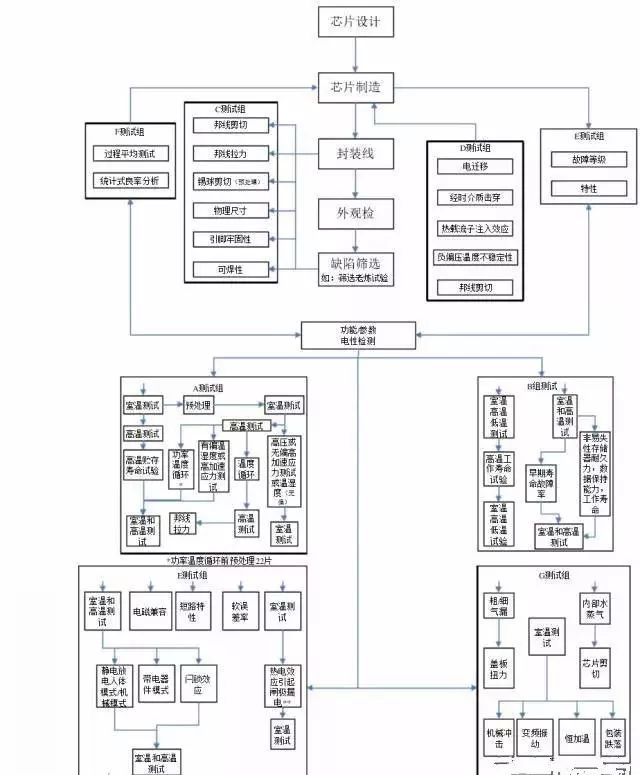
The prices of automotive electronic products are generally quite high, one of the main reasons being the use of automotive-grade electronic components. But what kind of electronic components qualify as automotive-grade? Let’s first look at the application of electronic components in cars and how it differs from general consumer electronics.
Environmental Requirements
Temperature: Automotive electronics have a wider range of operating temperature requirements depending on different installation locations, but they are generally higher than those for consumer products (it is said that AEC Q100 removed the 0℃-70℃ temperature requirement in version H, as no automotive product requires such a low range).
-
Engine area: -40℃ to 150℃;
-
Passenger compartment: -40℃ to 85℃;
-
Consumer products: 0℃ to 70℃.
Other environmental requirements such as humidity, mold, dust, water, EMC, and corrosion from harmful gases are often higher than those for consumer electronics.
Cars operate in a moving environment, subjecting many products to more vibrations and shocks. This requirement may be significantly higher than that of products used at home.
To illustrate the automotive reliability requirements, let me explain in another way:
1. Design Life: The typical design life of a car is around 15 years or 200,000 kilometers, which is much greater than the requirements for consumer electronics.
2. Under the same reliability requirements, the more components and links in the system, the higher the reliability requirements for the components. The level of electronics in cars is very high, with numerous electronic devices installed from the powertrain to the braking system, each device composed of many electronic components. If we simply consider them as a series relationship, ensuring that the entire vehicle achieves a certain level of reliability requires very high standards for each part of the system. This is why the requirements for automotive components are often described using PPM (parts per million).
Modern cars have entered a stage of mass production, with tens of thousands of units produced annually, thus requiring very high consistency in product quality. This was quite challenging for semiconductor materials in earlier years.
After all, controlling the consistency of processes such as diffusion in semiconductor production is quite difficult, resulting in products with easily dispersed performance. Initially, aging and screening were relied upon, but with continuous improvements in processes, consistency has greatly improved. The quality consistency is also the biggest difference between many local suppliers and internationally renowned suppliers. For complex automotive products, it is absolutely unacceptable for components with poor consistency to lead to safety hazards in the entire vehicle.
The requirements for the manufacturing process of automotive products are high. Although automotive parts are continuously evolving towards miniaturization and lightweighting, they can still afford to relax size and power consumption requirements compared to consumer products. Generally, larger packages are used to ensure sufficient mechanical strength and meet the manufacturing processes of major automotive suppliers.
Although automotive products have been decreasing in price in recent years, cars are still durable goods that must maintain a long-term ability to supply aftermarket parts. Additionally, developing an automotive component requires a significant amount of validation work, and the validation work involved in replacing components is also substantial. Therefore, both vehicle manufacturers and component suppliers need to maintain a stable supply for a relatively long time.
It seems that meeting the requirements for automotive products is indeed complex. The requirements mentioned above are for automotive parts (which translates to systems for electronic components). Converting these into requirements for electronic components becomes quite difficult, leading to the emergence of some normative standards. The most recognized are the AEC standards:
-
AEC Q100 for active device requirements
-
AEC Q200 for passive device requirements
Of course, many people might say there are also many standards from complete vehicle manufacturers. However, I would like to share my understanding. In the complete vehicle manufacturers I worked for, there were indeed general reliability requirements standards, but they assessed a complete automotive component (a system made up of electronic components), rather than directly targeting the requirements of the electronic components that make up these components (like resistors, capacitors, transistors, chips, etc.). While their requirements can be referenced for the selection of subordinate components, they are still quite unsuitable for electronic component testing.
Verification of Automotive Grade
In my previous work, I inevitably used some electronic components that did not have AEC Q100/200 certification. Many automotive personnel would hope to conduct some reliability tests to verify whether they meet automotive grade requirements.
My personal view is that this method is not very effective because these tests can only be necessary but not sufficient. They can only be used to negate the usability of the device, but cannot determine its usability.
The reason is simple; the sample size is too small, and the test items are not sufficient. For semiconductor components that are mass-produced, determining their reliability through a small sample test is, in my opinion, very unreliable. Here we can also take a look at the main certification test items conducted by AEC Q100 to see the differences.
Which Standard Has Higher Requirements?
Which has higher requirements, automotive grade or industrial grade? It is generally believed that the order of standards from high to low is military > automotive > industrial > consumer electronics. However, I personally cannot fully accept this order. Industrial requirements span a wide range, and the environmental and reliability needs can vary greatly. For example, the reliability requirements for key equipment in a large industrial facility will certainly not be lower than those for automotive requirements (such as critical equipment in a large power plant). At the same time, the harshness of the environment may also far exceed automotive requirements, so it cannot simply be said that industrial grade requirements are lower than automotive grade.
Disadvantages of Using Automotive Grade Parts
Any choice can have disadvantages. What are the downsides of using automotive-grade electronic components?
First, they are expensive. The high system requirements, substantial development and validation costs, and low production volumes lead to costs significantly higher than consumer electronics. The relatively high threshold also results in significant sales premiums.
Secondly, there is the difficulty of selection. Those involved in electronics know that today there is a vast array of electronic components available. For the same function, there can be multiple solutions, with potentially huge differences in complexity. However, sometimes to meet automotive-grade requirements, one may have to abandon some highly integrated solutions.
Another obvious drawback is that some products may be technologically outdated. Extensive validation work affects the speed of new product launches, and chip manufacturers generally prefer to apply products to the automotive market only after they have matured in the consumer electronics market. For example, in 2013, I was developing a product that used the ARM Cortex A9 processor, which at the time was one of the best products in the automotive market, but the ARM Cortex A57 processor was already common in the consumer market.
What Are the Risks of Using Non-Automotive Grade Electronic Components in Cars?
This question is quite complex and must be evaluated from multiple perspectives:
1. If the product has not received the relevant certification but actually meets the performance and reliability requirements and has undergone extensive application verification, the risk is relatively low.
2. This point is crucial: the relationship between the component and the system. The performance and reliability of the system are constituted by the subordinate electronic components. Therefore, under the same design, using non-automotive grade components will definitely result in inferior performance. However, a good design can reduce the component performance requirements. A well-designed protection mechanism that minimizes the impact of component failure on the system may allow for better products using non-automotive grade components.
Due to current technological limitations, not every electronic component required for automotive applications can meet the so-called automotive grade requirements. However, certain components must be used to achieve specific functions in vehicles. This situation can be divided into two categories:
a. The safety requirements of the function are high and deviations cannot be tolerated.
For example, the emergency call E-CALL function requires a backup battery to ensure performance. This function is related to life safety and, according to certain companies’ ASILI (ISO26262) ratings, must achieve level B.
We know that maintaining high performance at -40 degrees is quite challenging for batteries. Thus, some companies’ solutions involve wrapping the battery with heating resistance wires to ensure performance at low temperatures. While this may not meet the standards for individual components, it can satisfy the requirements of automotive manufacturers when considered as part of the assembly. This also illustrates the relationship between the standards of complete vehicle manufacturers and component standards.
b. The function generally does not involve safety and deviations can be accepted.
For instance, the LCD screen of an entertainment system may experience decreased responsiveness and optical performance at low temperatures. However, this situation may be acceptable to some engineers.
3. Some “daring” individuals, due to certain ideas like cost reduction or improved performance, may attempt to verify the performance and reliability of non-automotive grade components using only a small number of samples in a short period. In such cases, I can only say that the future relies on luck, as no one knows what might happen.
Source: This content and images are sourced from the WeChat public account AutoIO. Thank you.
‧‧‧‧‧‧‧‧‧‧‧‧‧‧‧‧ END ‧‧‧‧‧‧‧‧‧‧‧‧‧‧‧‧



